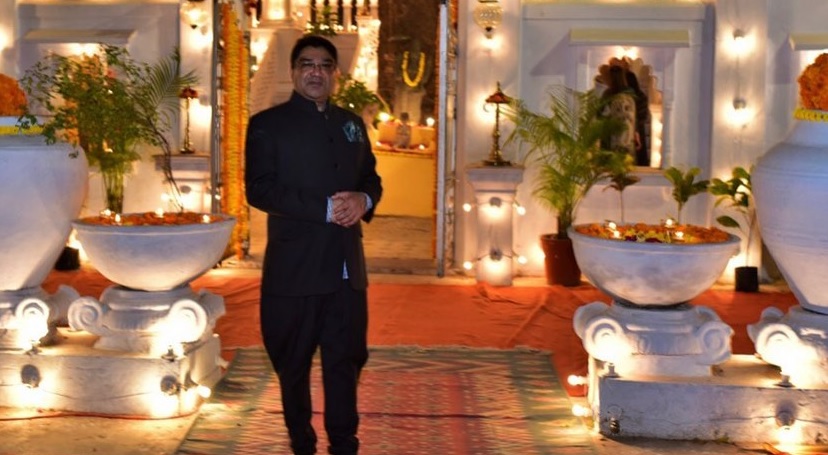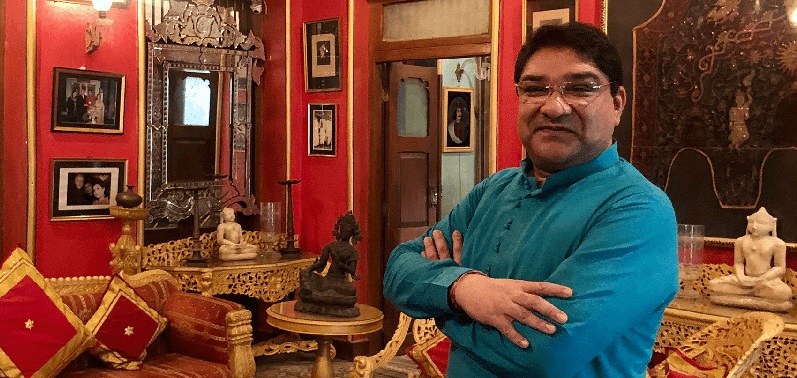‘I am a product of pre-internet and pre-email. Let us put it that way: Umang Hutheesing began the conversation with Nidheesh Tyagi from Abir in Samvaad, aiming to create a platform for thought-provoking discussions, providing readers with an exclusive glimpse into the creative processes, inspirations, and experiences of creative individuals.
I went to America to study in 1984 and did my undergraduate there at Babson. After graduation, and at that time, the knowledge was very restricted to direct access. Even when I traveled by sea as a young teenager at 18–19 years old, my exposure to Indian classics and history was perfect, but not to contemporary world history and art. I knew little but not much. So, my godfather, Anand Saheb, my uncle and godfather, was a fantastic man. I was exposed to wonderful people of art. And through him, I got to meet fabulous artists. From Rosenberg to Jim Jasper, and even Jackson Pollock opened my eyes, and I met Andy Warhol, too. So, I’ve spent decent time with these artists, in their studios, in Southampton, Easthampton, every summer.
This was my exposure to the world of international art and design. It brought a full circle after graduation from Boston, New York, because of the association with the Metropolitan Museum of Art, its director, and its curators; together, we explored and researched a lot of the products in their collection by my family, and that’s what a great dialogue of European art, Indian Art, European Design, Indian Design, and how we all, I mean, at the end of the day, what are the beautiful things?

Well, beauty is different in different cultures. That taught me a lot. During my master’s in Japan, I also trained under Harey Wilston for jewelry design and interned with David Hockney for art. I did all of these works, exposing me to contemporary art. There, I found the difference between Indian Classical Miniature and Reneau or Matisse. I had this privilege; I knew the Picasso family very well. I stayed with them and understood Picasso’s journey from classical art, and you know, one can do any abstract art and say it is art, but it’s not true. Even Picasso and others were the great masters of classical art, and only when they mastered it could they create something as a new language in art, and it was also with great focus. For example, Picasso’s cubism started from his understanding of an African mask. There’s a great story around it. So, art is not just a technique but also a lot of thought processes. That technique represents it in execution. So, all this was my exposure to the West.
I came back. As I said, my heart is very Indian. So, like the migratory bird, I may go anywhere and create, but when the winters come, I always come back home. This is where my nest is. I came back, and that was when I started looking at art in India with a new focus. Education gives exposure, enlightens your mind, and you see things in a new direction.
I started seeing what we have in our collection. Raja Ravi Verma came and stayed with my ancestors in Hutheesong Haveli. Tagore also stayed at Hutheesing Haveli, and even the first solo show of M.F. Hussain happened at Hutheesing Centre. So, there’s a continuation of the tradition of art.
These are not collections, and we have a lot in our collection. Some are very important and are not bought as investments but bought and collected to support artists. Over the last 80 years or 100 years, it has become valuable. Our focus for buying was not investment but to keep them. That is why Hutheesing Visual Arts Centre was built as a sister institution of Santiniketan; it is its 45th year. My grandfather’s sister was married to the Tagore family, the first Gujarat student into Santiniketan.
There’s a beautiful article written about her. She was the favorite student of Rabindranath Tagore. She married his nephew, Saumyendranth Tagore, the chancellor of Kala Bhawan, so we have beautiful two hundred pieces from Bengal school. I started looking at that with different perspectives. Then, I got involved with the Hutheesing Art Centre as a patron but not a collector, as a trustee. It put me with many younger artists, well, the new-age artists. I realized that many young Indian artists today could access internet entities to learn. By saying young artist, I don’t mean age young but by practice. Young practice. Anywhere in India today, they can see what, even films documented on various artists worldwide, whether a Japanese artist’s brush painting or a European masters.





